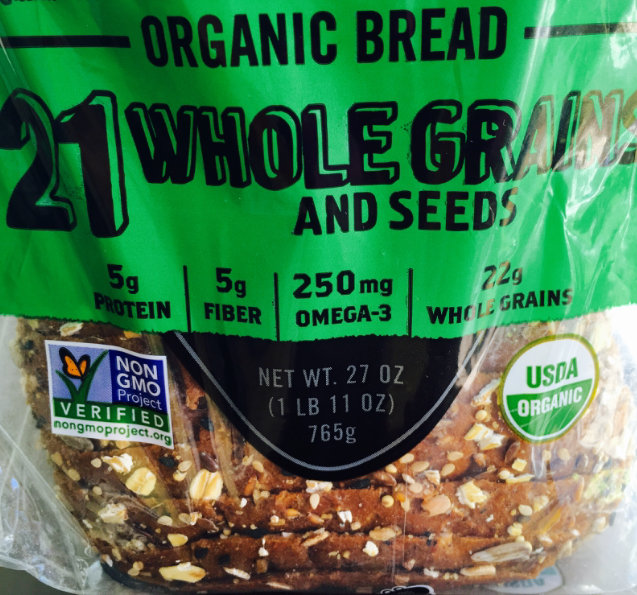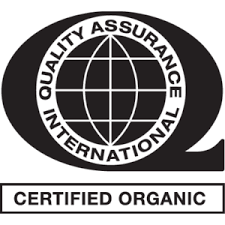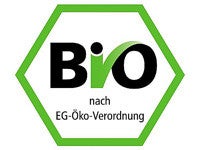Understanding food labels can be challenging for average consumers. It is common to misunderstand that all produce and products sold at health food stores and natural supermarkets are organic. Many of the health-conscious consumers choose to go to supermarket chains such as Whole Foods, Sprouts, and Trader Joe’s. The truth is that not everything sold in these markets is organic. How do you choose organic produce and products?
Here are the dos and don’ts for shopping for organic foods.
1. Look for USDA Certified Organic Seal
In 2002, the United States Department of Agriculture (USDA) established National Organic Program (NOP) to regulate how foods labeled organic are grown and processed.
Organic certification verifies that farms and businesses comply with the USDA organic regulations. Certified farms and businesses can sell, label, and represent their product or products as organic. In order to use the word “organic” or the USDA organic seal on food, the specific standards must be met under the NOP regulations.
The NOP defines organic crops, livestock, and wild crops as follows.
“Organic crops are raised without using most conventional pesticides, petroleum-based fertilizers, or sewage sludge-based fertilizers. Animals raised on an organic operation must be fed organic feed and given access to the outdoors. They are given no antibiotics or growth hormones. The NOP regulations prohibit the use of genetic engineering, ionizing radiation, and sewage sludge in organic production and handling.”
Packaged food products must contain at least 95 percent organic ingredients. To make sure packaged foods are organic, look for the USDA Certified Organic Seal.
2. Look for Other Organic Certification Seals
Organic produce and products can be certified by USDA-accredited certifying agents. Accredited private, foreign, or state organizations can be authorized to certify organic farms and businesses. Currently, there are nearly 80 accredited certifying agents in the world. The agents are responsible for making sure all organic standards are met under the USDA organic regulations.
Here are the examples of what seals to look for:
- California Certified Organic Farmers (CCOF)
- Accredited private certifying agent
- Nonprofit organization founded in California
- Quality Assurance International (QAI)
- Leading nonprofit organization for organic certification
- Providing certification services worldwide
- ECOCERT
- Founded in France
- Specialized in the certification of organic agricultural products
- Operating its services in over 130 countries Worldwide
- Bio-Siegel
- The EU organic farming logo established in Germany
- Labels organically farmed products and pre-packaged organic foods
- Japanese Agricultural Organic Standard (JAS)
- Certified by registered Japanese or overseas certifying agents
- Organic JAS products are either
- Produced within the United States or Japan
- Final processing or packaging must occur within the United States or Japan.
To find more certifiers, check out the Organic Certifier Locator provided by USDA.
3. Pay Attention to PLU Codes
Price Look Up (PLU) codes are used by supermarkets to identify bulk produce such as fruits, vegetables, and nuts. PLU codes are 4 or 5 digit numbers indicated on a sticker applied to an individual fresh produce.
The 4-digit PLU codes typically within the 3000 and 4000 series are randomly assigned to conventionally grown produce.
To identify organic produce, the prefix of 9 is placed in front of the 4-digit codes.
Here are the examples.
- PLU code for conventionally grown yellow bananas is 4011
- PLU code for organically grown yellow bananas is 94011
4. Don’t Get Confused by “Made With Organic” Products
Some products are labeled as “made with organic” such as “made with organic figs and almonds” on the package. It is important to be aware that made with organic products are not 100% organic. Instead, they contain partially organic ingredients.
Here are the requirements for products in the made with organic category.
- At least 70 percent of the ingredients must be certified organic
- Up to 30 percent can be made up of allowed non-organic ingredients
- All ingredients must be non-GMOs
Products meeting these requirements are allowed to include a statement like “made with organic apples” according to the USDA organic regulations.
5. Don’t Get Tricked by “All Natural” Products
The term “natural” for use in food labeling is not regulated by the Food and Drug Administration (FDA). The term “natural” has no clear meaning. It does not guarantee food production methods nor does it promise processing or manufacturing methods. Just because “all natural” is on the label, it does not mean the ingredients are natural or organic. In other words, the packaged foods labeled “all natural” may contain GMOs, hormones, or artificial ingredients. To check if the products are made with natural ingredients, read the ingredients on the food labels. To check if the products are made with organic ingredients, look for the USDA or other organic certification seals on the packages.
Reference
“About CCOF.” About CCOF | CCOF - Organic Certification, Education and Outreach, Advocacy and Leadership since 1973., www.ccof.org/ccof.
“Bio-Siegel.” Oekolandbau.de, 2 May 2018, www.oekolandbau.de/en/bio-siegel/.
“Organic Certification and Accreditation.” Fresh Cranberry Grades and Standards | Agricultural Marketing Service, www.ams.usda.gov/services/organic-certification.
“Organic Certifying Agents.” Fresh Cranberry Grades and Standards | Agricultural Marketing Service, www.ams.usda.gov/resources/organic-certifying-agents.
“Organisation.” Ecocert - Certification Body, www.ecocert.com/en/organisation.
“PLU Code News.” PLU-Codes Search, www.ifpsglobal.com/Identification/PLU-Codes.
“Organic 101: Understanding the ‘Made with Organic***" Label.” USDA, www.usda.gov/media/blog/2014/05/16/organic-101-understanding-made-organic-label.






